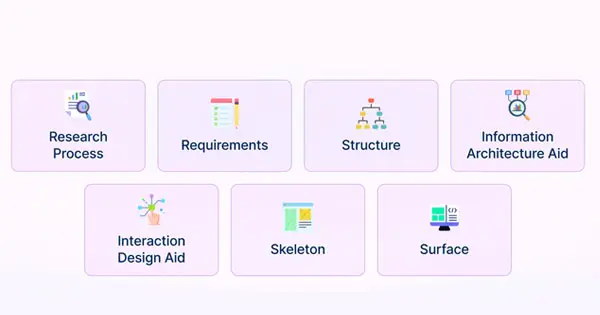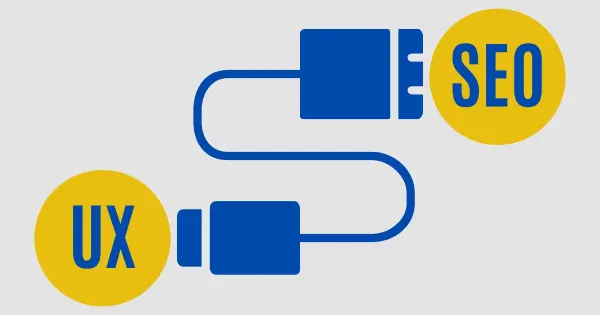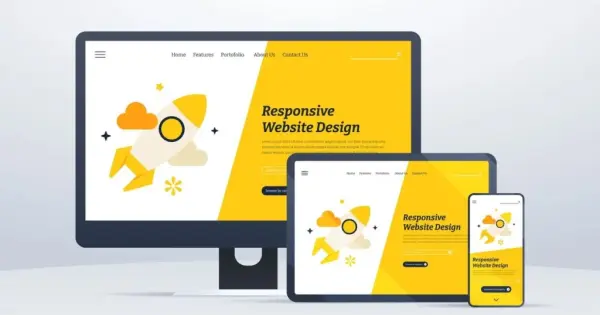How User Experience (UX) Impacts Website Success
Written by UIDesignz Jan 16, 2025 5 min read
Last updated: Feb 17 2025
-Impacts-Website-Success.jpg)
The success of a website heavily relies on its User Experience (UX). Whether you're running a blog, an e-commerce store, or a corporate site, UI UX design determines how users perceive and interact with your platform. A well-designed UX can boost engagement, conversions, and customer satisfaction, while a poor one can drive users away. This blog dives deep into how UX impacts website success, covering its importance, elements, strategies, and real-world examples.
Table of Contents
What is User Experience (UX)?
.webp)
What is User Experience (UX)? (ArtSquareLab)
User Experience (UX) encompasses all aspects of how a user interacts with a website. It includes the site's layout, navigation, speed, functionality, and the emotions users feel when engaging with the site. A positive user experience ensures users can easily achieve their goals, whether it's finding information, purchasing a product, or signing up for a service.
Why UX is Crucial for Website Success
A website's success is defined by how effectively it meets its objectives, such as traffic generation, lead conversion, and user retention. UX directly influences these factors by:
- Improving Accessibility- Ensures that the website is easy to use for people of all abilities.
- Enhancing Navigation- Helps users find what they need quickly.
- Boosting Engagement- Encourages users to explore more pages.
- Increasing Conversions- A seamless experience makes users more likely to take desired actions.
- Building Trust- A well-designed, professional website fosters credibility.
Core Elements of UX Design

Core Elements of UX Design (UX Design Institute)
Usability
The site should be intuitive, allowing users to complete tasks efficiently. Clear CTAs, logical page layouts, and minimal distractions are key.
Accessibility
Websites should cater to all users, including those with disabilities. This includes text-to-speech options, keyboard navigation, and color contrast.
Aesthetics
Visual design plays a significant role in creating a memorable first impression. Consistent branding, appealing layouts, and modern design elements enhance aesthetics.
Performance
Site speed, responsiveness, and functionality must be top-notch. Slow-loading pages or broken links can frustrate users, leading to higher bounce rates.
Read More: 10 Website Development Trends to Watch in 2025
The Relationship Between UX and SEO

The Relationship Between UX and SEO (Ramotion)
Search engines like Google prioritize user-centric websites. Factors like mobile-friendliness, site speed, and low bounce rates influence rankings. UX and SEO go hand in hand, as a better UX often results in improved search engine visibility. For example:
- Google’s Core Web Vitals measure metrics like page load speed and visual stability, directly linking them to SEO performance.
- A seamless navigation structure helps search engines crawl and index your site effectively.
How UX Impacts Conversion Rates
A poorly designed UX can lose you potential customers. Here's how good UX can drive conversions:
- Streamlined Checkout Process- Reducing steps in an e-commerce checkout flow boosts sales.
- Personalized Experiences- Tailored content and recommendations increase user engagement.
- Error-Free Design- Clear error messages and forgiving systems (like autosave) improve user satisfaction.
UX Design and Customer Retention
A happy user is more likely to return. Good UX fosters loyalty by:
- Providing consistent experiences across devices.
- Offering value without friction.
- Building emotional connections through engaging interactions.
Common UX Mistakes to Avoid
Some pitfalls to steer clear of include:
- Overloading the site with unnecessary animations.
- Ignoring mobile-first design principles.
- Failing to conduct usability testing before launch.
Checkout our portfolio: UI UX Design Portfolio
Top UX Design Strategies for Better Website Success
A poorly designed UX can lose you potential customers. Here's how good UX can drive conversions:
- Prioritize Simplicity- Clean layouts reduce cognitive load.
- Use Heat Maps- Analyze where users interact the most.
- Implement A/B Testing- Continuously optimize elements based on user feedback.
The Role of Mobile Responsiveness in UX

The Role of Mobile Responsiveness in UX (Ramotion)
With over 60% of website design traffic coming from mobile devices, responsive design is non-negotiable. Features like adaptive layouts, touch-friendly buttons, and optimized images enhance mobile UX.
Tools to Evaluate and Improve UX
Here are some popular tools to help improve UX:
- Google Analytics- Tracks user behavior and site performance.
- Hotjar- Provides heatmaps and session recordings.
- Figma- A collaborative tool for prototyping and designing.
- Lighthouse- Offers actionable insights on performance and accessibility.
Case Studies of Websites Excelling in UX
Amazon-Amazon's UX emphasizes ease of use, quick navigation, and personalized recommendations.
Airbnb-Airbnb’s intuitive design, clear visuals, and seamless booking experience make it a UX standout.
How to Measure UX Success
Metrics to assess UX effectiveness include:
- Bounce Rate- Lower rates indicate engaging content.
- Session Duration- Longer durations reflect better experiences.
- Conversion Rate- Directly tied to UX quality.
- Net Promoter Score (NPS)- Gauges user satisfaction and loyalty.
Trends in UX Design for 2025 and Beyond
Emerging trends include
- Voice Search Optimization- Tailoring UX for voice commands.
- Dark Mode Designs- Reducing eye strain for users.
- AI-Driven Personalization- Directly tied to UX quality.
Checkout our web design projects: Website Design
The Role of AI in Shaping UX

The Role of AI in Shaping UX (Ramotion)
AI and machine learning are transforming UX by:
- Predicting user behavior.
- Automating content recommendations.
- Enhancing chatbot interactions.
Conclusion
Investing in UI UX design is essential for any website aiming for success. By understanding your audience, optimizing for their needs, and continuously improving, you can create a website that not only attracts users but keeps them coming back. Remember, a great UX isn’t just about aesthetics; it’s about making users’ lives easier.





